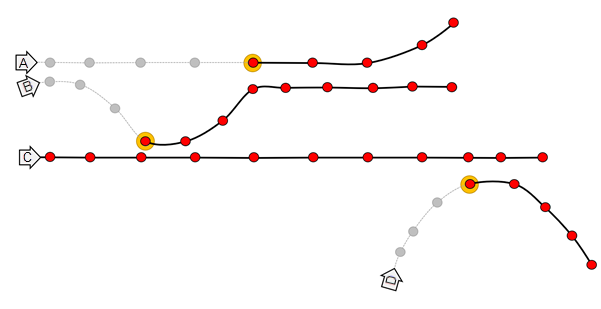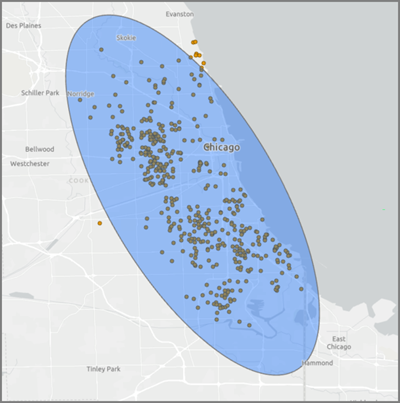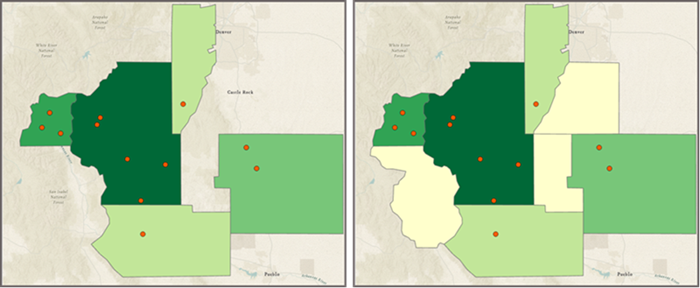ArcGIS GeoAnalytics Server 10.9.1 includes updates, enhancements, and bug fixes.
If you're upgrading to ArcGIS GeoAnalytics Server 10.9.1 from version 10.8.1 or earlier, you must reauthorize your software. You can obtain a new license file from My Esri. At 10.9, the ports required by GeoAnalytics Server have changed. Ensure the required ports are open before upgrading.
New at 10.9.1
New item experience for big data file shares
You can now add big data file shares through the New item interface in your portal's pane. You can review and update properties such as the schema, time, and geometry of your data in the big data file share item page.
New analysis tools and tool enhancements
The new Group by Proximity tool groups features that are within spatial proximity or spatiotemporal proximity of each other.

The Group by Proximity tool can be run through ArcGIS REST API, ArcGIS Pro, and ArcGIS API for Python.
The Summarize Within tool has been enhanced to support the following new output weighted statistics:
- Standard deviation—The standard deviation of weighted values in each field. The weight applied is the proportion of the summary layer within the polygons.
- Variance—The variance of weighted values in each field. The weight applied is the proportion of the summary layer within the polygons.
New at 10.9
New analysis tools and tool enhancements
The Trace Proximity Events tool analyzes time-enabled point features representing moving entities. The tool follows entities of interest in space (location) and time to see which other entities the entities of interest have interacted with. The trace continues from entity to entity to a configurable maximum degrees of separation from the original entity of interest.

For example, suppose an organization monitors company-issued devices carried by workers. The company is interested in determining which employees were near an individual known to have coronavirus disease 2019 (COVID-19). Using the point layer representing device locations and time, they can identify devices that have been within 6 meters and 5 minutes of the contagious person and other possibly contagious employees.
As another example, an NGO is monitoring salmon populations using GPS and is interested in tracking the spread of salmon lice between escaped farmed salmon and wild populations. Some GPS-tagged farmed salmon were tracked to see whether they come in close proximity with tagged wild populations, and how those wild populations may further spread the disease.
You can run the Trace Proximity Events tool through ArcGIS REST API, Map Viewer Classic,ArcGIS Pro, and ArcGIS API for Python.
The Summarize Center and Dispersion tool can be used to find central features and directional distributions, and it calculates mean and median locations from your point data.

The Summarize Center and Dispersion tool can be run through ArcGIS REST API, ArcGIS Pro, and ArcGIS API for Python.
New Arcade expressions to calculate speed, acceleration, and distance on tracks are available in the following tools: Reconstruct Tracks, Calculate Field, and Detect Incidents.
Reconstruct Tracks—Options have been added for how to represent split tracks, including the option to use an Arcade expression. You can determine how tracks are drawn and summarized using the split type parameter.
Join Features—An option has been added to keep all target features (known as an outer left join).

Summarize Attributes—You can now apply time stepping to summarized results.